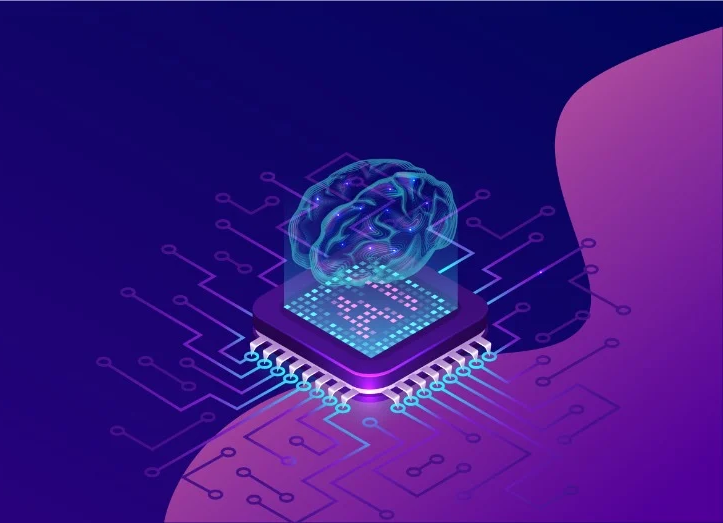
2022 Human-Centered Design Must-Read Guide

Over the last few years, design processes have moved away from the traditional ideals and started focusing on the target audience and the person who will ultimately see the design and be influenced or affected by it. As a result of these changes, the human-centered design process was born.
But, what is human-centered design and how does it impact the design process? Learn all about this approach below.
What Is Human-Centered Design (HCD)?
Developed by Professor John E. Arnold, who founded the Stanford University design program in 1958, and known most commonly today as “design thinking”, the human-centered design is a problem-solving approach and process that focuses on understanding the person having the problem the design is looking to solve.
A 2020 article by designers Thomas Both and Nadia Roumani from the Stanford design program provides a more complete human centered design definition: “Human-centered design is a process, mindset, and approach to identify meaningful challenges and creatively solve complex problems. It guides practitioners to understand and respond to the needs of specific people, question assumptions and reframe problems, and experiment to advance their solutions. Also known as design thinking, it is a philosophy that empowers an individual or team to design products, services, systems, and experiences that address the core needs of those who experience a problem.”
Unlike the user-centered design, which aims to provide useful products and product experiences that can also be valuable and functional for the individual user, enhancing the user experience (UX), this approach helps design impactful and effective solutions for systemic problems as well as for problems affecting small groups of people.
Human-centered design thinking involves understanding the perspective of the individual who is experiencing that problem, what they need and if the solution in mind can actually meet his or her needs in the best way.
Main Human-Centered Design Principles
There are several principles that guide the HCD approach, mainly:
- Focus on the people. Ultimately, the human-centered design process revolves around humans and their wants and needs. So when you are designing, always keep in mind that you are doing so for real people, they will interact with your product or service to meet specific needs and achieve their goals. Take time to observe people in their environment, this provides invaluable information for your project.
- Identify the right problem. According to Don Norman, there are two types of problems: fundamental problems and the symptoms of the problem. Be sure to do extensive research and take your time, if possible, to find the fundamental problem. Trying to solve the wrong problem will eventually lead to having to restructure and redo the whole solution.
- Consider the big picture. Don’t focus exclusively on specific parts of the journey, try to think about the entire process and what you want people to achieve by using your product or service.
- Always test. Your ideas may be great, but if you don’t test them with your target audience, you won’t be able to know whether your ideas are the right solution for the problem you are trying to address.
How Does the Human-Centered Design Process Work?
The human-centered design process consists of 3 key steps: Inspiration, Ideation and Implementation. Depending on the company that uses the process, the number of steps may be higher. Some choose to have 5 or 6 steps and make the process more thorough.
As with most processes, whenever new information or a roadblock appears, you may need to reevaluate and go back to a previous step, it’s not linear. However, with every iteration, you are getting closer to meeting that person’s or group’s needs.
This process involves discovering new information, brainstorming and making sense of the information and discoveries, merging them into a cohesive resolution.
Step 1: Inspiration
This first step sets the framework for the entire project. This is where you identify the different challenges you will need to address throughout the entire process. In this stage you will also need to:
- understand what the project is all about, what are the business goals and the research goals. Ask yourself, “What are we trying to achieve here?”, “What are we trying to help our customers with?.”
- really dig into the problem, do extensive research on the matter and get in-depth knowledge of the context, the environment.
- know who the research will be about, who will use the product or service, what they expect from it, how they can be segmented and how to learn more about them.
You can resort to market research and have a look at what your competitors are doing. You can also set specific guidelines and conduct your own research to get first-hand information. Establish the logistics, the time it will take, what the interviews will involve, etc.
Conducting research may just take a few days or extend to a few months, depending on the project and the budget available. Many companies don’t dedicate much time or effort to doing their own research and begin the project with assumptions they cannot prove and build on these, which can often prove counterproductive.
Step 2: Ideation
This second step of the human-centered design process helps make sense of the learnings and discoveries you made in the Observation or Inspiration Phase. Now that you have the data, you need to put it into context, identify potential opportunities and really understand and empathize with the person or group experiencing the problem you are trying to solve. Here is where you get insights.
Brainstorming is a great way to kick off this stage, considering the different variables together as a team and discussing potential roadblocks that may appear. Great ideas stem from collaboration, so make sure everyone can participate and consider the different aspects of the project, from expectations, to challenges, what competitors are doing, questions you may have and solutions you come up with.
You want to focus more on the quantity of ideas at first, to then start refining the concepts and finally getting to the ultimate design. This ultimate design generally comes from testing iteration and from redefining ideas and concepts.
Stakeholders can also provide valuable feedback in this stage. Their expertise can help find additional opportunities.
Step 3: Implementation
This step is crucial, since it involves actually placing all your thoughts, research and findings into the design of a prototype, which can then be tested by users. Testing aims to validate the ideas in a more practical way, and users are key in this process: they can lead you down the right path or refute concepts you had considered valid at first. With every testing session, you will get more clarity and direction.
Testing generally starts with low-fidelity prototypes and as you start validating or refuting concepts, you adjust your design until you have a high fidelity prototype. Stages two and three generally work together. Iterations are essential to the human-centered design process: you conduct user testing, get feedback, go back to the design phase to make changes and then advance to the testing stage.
4 Great Human-Centered Design Examples
Since this approach was first developed and promoted, several different brands have adopted the human-centered design process to create new products. Some of these are:
1. Colgate Toothbrush
In an effort to create a new toothbrush model, Colgate-Palmolive hired a design consulting firm focused on human-centered designs, Altitude. After conducting extensive research they developed the Motion, a high-powered toothbrush, slender, with oscillating heads and an arching neck. The model was extremely successful because it was slender than most toothbrushes without losing power.
2. Venmo
Exchanging money was extremely hard before Venmo came along. According to the founders of the company, Andrew Kortina and Iqram Magdon-Ismail, they came up with the idea after experiencing a related problem: they went to New York city and Iqram forgot his wallet, so Andrew paid for everything, and when they returned Iqram sent him a check. During this exchange, they wondered how no solution for this was available yet. They then developed Venmo.
3. Spotify
Before Spotify, people would pay for each individual download or buy whole albums at the store. Spotify provided a truly human-centered design solution, simplifying the music purchase process for users, who can now select songs based on their interests, all in one single place and pay a fixed monthly fee.
4. Duolingo
Learning languages can be expensive and time consuming. You have fixed classes with a teacher in a specific place, and often, it can feel hard and even boring. Duolingo addresses all of these issues, making sure you can learn languages from anywhere in the world, at any time, and learn in an easy and fun way, advancing to new categories after finishing a session.
Human Centered Design Tools & Resources
There are several human centered design tools or methods that can help navigate the human-centered design process, including:
- Piloting (a small scale implementation that helps test the viability of an idea)
- Usability testing (researcher asks user to perform tasks to see how intuitive they are for the user)
- Affinity mapping (a method that helps analyze and synthesize information gathered by research)
- Card sorting (tool to create categories for sites and documents based on user feedback)
- Rapid prototyping
- Concept walkthrough
- Contextual inquiry
- Design sprint
- Experience prototyping
- Service staging
You can also resort to online resources to help you navigate the ins and outs of your process and create more specific, customized steps that adjust to your specific team and business. Some of these resources are:
- The Field Guide to Human-Centred Design, developed by IDEO.org, a non-profit design studio.
- Innovating for People: Handbook of Human-Centred Design Methods by the Luma Institute. You can purchase it on Amazon.
- Design Methods for Developing Services, developed by the Design Council, and includes several different design tools for the design process the Council named “Double diamond”, with four different phases.
- The Design Thinking Process by Stanford Design School. Learn all about the design thinking process or human-centered design process as taught by Stanford.
- Introduction to Human-Centered Design, a free course designed by IDEO.org to understand the basics of HCD.
Now that you have read our guide, are you ready to give it a try?
How Human-Centered Design Impacts Web & Mobile Development
Human-centered design can have a great impact on the solution you are proposing. It is key to identifying a problem affecting people in their everyday lives as well as a very useful way of discovering the most suitable solution for users. Although this solution was first implemented in social projects, today it can be applied in virtually any industry and scenario, especially in web and mobile development.
For instance, at Nearsure, a big part of our job is to cater to the needs of our clients, but more importantly, to the needs and wants of their target audience or customers, so human-centered design and user experience significantly impact our day to day operations. Ensuring the success of the project is just as much our responsibility as it is the client’s.
If you want to learn more about Nearsure, make sure to visit our About Us page and check out our latest job openings in our Careers page.




